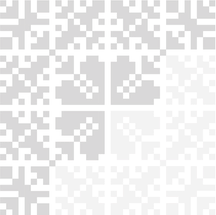C10 M1 L2 Grammar
10 | Modul 1: Gramatika
Budimo zajedno!
10 | 1 | Lekcija 2: Poklon za rođendan
| How to Express the Position and Distance?
Expressing geographical distances is a personal perspective, and not everyone will have the same perception. For example: if you need to drive for 4 hours in Croatia, that can be seen as a very long drive and not many people would generally do that often. The same distance in the U.S. can be perceived as not a very long drive. However, for the sake of understanding vocabulary and how the grammar functions let’s use the following examples to express distance. All these expressions will be followed by the Genitive case.
blizu | pokraj | daleko od | nedaleko od |
near by/ close by | next to | far away from | not far away from |
| Na primjer:
Teksas se nalazi blizu Kanzasa. | |
Teksas se nalazi pokraj Novog Meksika. | |
Florida se nalazi daleko od Washingtona. | |
Oregon se nalazi nedaleko od Wyominga. |
As you can see, the two prepositions – blizu, pokraj – do not use the “od” part. However, when wanting to express the notion of (not) far away we need to use the structure daleko od, nedaleko od. The word that follows has to be in the Genitive case.
Maps
When talking about maps and position on the maps, two other very useful prepositions are: ispod (under/below) and iznad (above). For example:
Teksas se nalazi ispod Oklahome. | |
Nebraska se nalazi iznad Kanzasa. |
10.1 Zadatak 4. Gdje se nalazi?
| Cardinal Directions
You already learned cardinal directions in one of the previous units. Today, we are using them to indicate where something is located – south of, north of, etc.
sjever | jug | istok | zapad |
sjeverno od | južno od | istočno od | zapadno od |
North (of) | South (of) | East (of) | West (of) |
| Na primjer: |
Teksas se nalazi južno od Oklahome. |
Kansas se nalazi sjeverno od Oklahome. |
Teksas se nalazi istočno od Novog Meksika. |
Montana se nalazi zapadno od Sjeverne Dakote. |
10.1 Zadatak 5. Položaj
| Imperative of –ći Verbs that indicate Motion
Today you encountered (again) three –ći verbs that indicate a certain motion: poći, doći, otići. All three verbs originate from (are connected to) the verb ići. While the imperative form of the verb ići will be: idi (you go!), these verbs will not have the letter –d– in their stem. Rather, they will have the letter –đ– as a result of sound changes. Thus, these verbs will take the following forms in the imperative. To remember this easier, think of the present tense of all three verbs. The pattern is the same.
Infinitive | POĆI (po-đ–em) | OTIĆI (oti-đ–em) | DOĆI (do-đ–em) |
2nd person sing. – ti | po-đ–i | oti-đ–i | do-đ–i |
1st person pl. – mi | po-đ–imo | oti-đ–imo | do-đ–imo |
2nd person pl. – vi/Vi | po-đ–ite | oti-đ–ite | do-đ–ite |
Images used in this document are from these sources.












